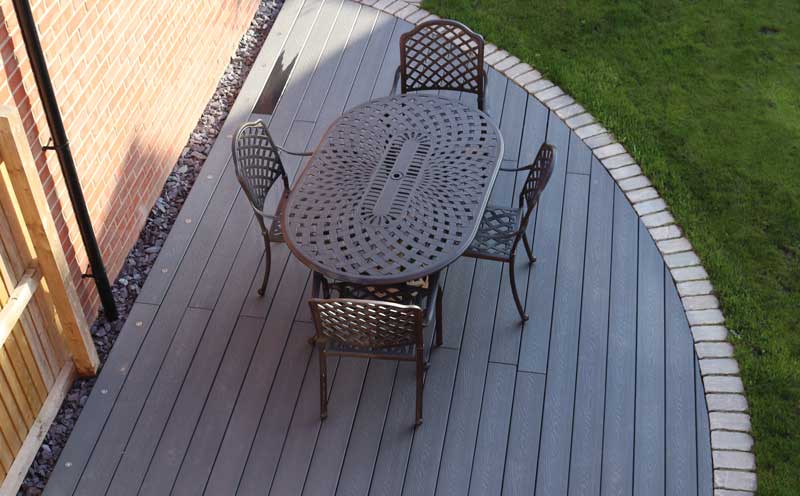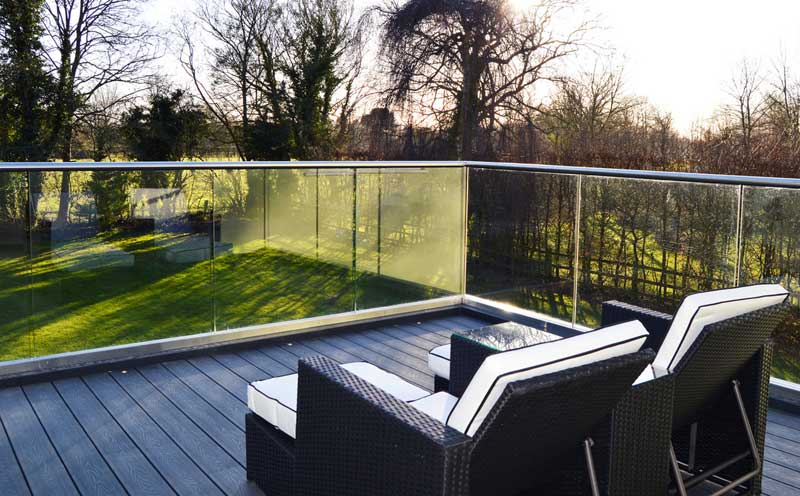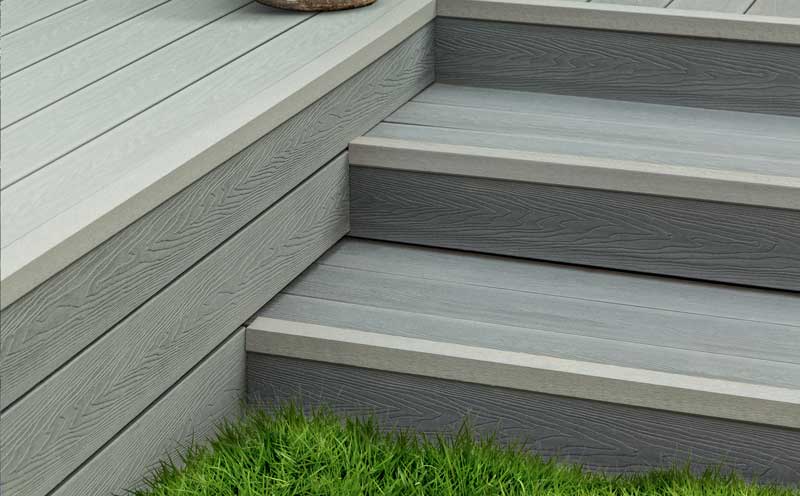Possibly the hardest of tasks to face in the preparation phase of your project is deciding your subframe option. The key to doing so is to ensure that you are offering a solid platform for our boards to sit on, while ensuring the long-term safety of the decking area. Here we shall cover the options that you have available to you, depending on your budget and your decking environment.
Setting #1: A Solid Base
If you are planning on building on an existing patio, concrete base or solid foundation with a low-lying decking project, then a joist network that sits directly onto the base is your best option. You have two main options available to you when looking achieve this type of low-lying decking area. The main challenge of this type of installation is to avoid the threat of sitting water, which can so often be the worst enemy of most subframe solutions.

Subframe Options:
Composite Joists (The NeoTimber Recommended Solution): Composed of a water resistant, rot-free material, WPC (wood plastic composite) joists are designed as a long-lasting alternative to wood, much like composite boards themselves. These two products are recommended to be installed hand-in-hand, free from the inherent flaws of timber, ensuring that costs of maintenance and upkeep remain low. Free from suffering the long-term consequences that arise from sitting water – your composite subframe will provide you with extra reassurance, year-after-year. If you are looking to shave off costs in the short-run, this option may not be for you, but we do argue that any other solution is slightly counter-intuitive.
Wooden/Timber Joists: A popular alternative to composite joists is a subframe solution comprised of timber, more familiar with installers of traditional decking. To reduce a timber subframe’s exposure to weathering and most of all, sitting water, we would always recommend opting for a tanalised (treated) timber material. While a timber joist network does no doubt seem like a relatively inexpensive solution in the short-run, there is a danger that this material can suffer the same issues that often plague timber deck boards: warping, splitting and rotting. In time, therefore, the price of maintenance and the threat of replacement can become more prominent, increasing the initial cost for what is often regarded as the cost-saving solution.
Setting #2: A Roof Terrace
Roof terraces have in the past been notoriously tricky environments to install decking. Avoiding waterproof membranes and allowing for sufficient drainage are two vital considerations when tackling this type of decking project. Below are the two options we would recommend.

Subframe Options:
Decking Pedestals (The NeoTimber Recommended Solution): A decking pedestal network allows installers to raise their entire subframe, proving an excellent platform to lay your composite boards onto roof terraces without the need to pierce the roof’s waterproof membrane. The pedestals allow for a suitable level of airflow underneath the decking, as well as spreading the weight of the decking evenly across the project, reducing the stress on the terrace itself. NeoTimber pedestal’s twist-and-lock adjustability allows users to set their desired height within a specific height range.
Wooden/Timber Or Metal Joists: Your alternative subframe option would be to construct what is regarded as a ‘floating subframe’ out of either a metal or timber joist network. Opting for this solution – you are not required to screw directly into the waterproof membrane of the roof terrace or balcony, as the joist network can simply sit on the surface, supported by its own weight. Fire safety regulations will often advise against the use of a highly combustible material such as timber, so customers are often left with the option of a metal solution, such as an aluminium or steel subframe.
Setting #3: Uneven Ground And Raised Decking Areas
When presented with uneven, soft ground to build you deck on – installers are often faced with added man hours. The key with these types of projects is often to elevate the area via the use of a post network which will provide a base for a flat and structurally sound deck area. These posts and joists can come in two main forms.

Subframe Options:
Recycled Plastic Joist And Post Network (The NeoTimber Recommended Solution): Recycled plastic is regarded as one of the most sustainable building materials and provides raised decking areas with a low-maintenance, long-life subframe solution. The nature of the material is such that it will remain strong and stable as it ages, unlike most timber alternatives, whose structural integrity is compromised with age. The NeoTimber plastic lumber joist and plastic post network provides a solution free from the integral flaws of traditional timber subframe solutions – a perfect accompaniment to our wide range of long-lasting composite deck boards which can be installed in the most challenging of environments.
Wooden/Timber Joist And Post Network: The more common approach to tackling this type of install would be to opt for the old school technique of using timber posts and joists. Timber provides installers with a level of flexibility and is relatively inexpensive in the short run. The one concern that while it is true that elevating the subframe of your project will reduce the level of sitting water exposed to the joists, the timber material will undoubtedly suffer the effects of sitting water between the boards and the joists. To prolong the inevitable demise of your joist timber framework, a pressure-treated tantalised timber is a must. Ensure all cut-ends of your timber joists are treated with an appropriate end-seal joist tape to prolong their life.
Need Further Support or Advice?
If you’ve still got questions that have not been answered here, or you would like additional advice,
support or assistance then please give one of our friendly experts a call and we’ll be happy to help.
Just give us a call on 01530 382 180.
